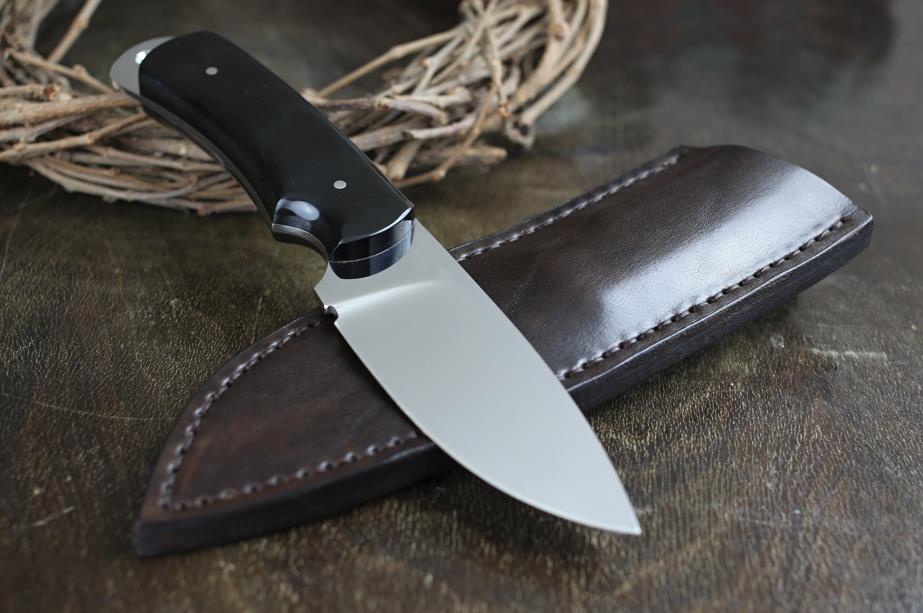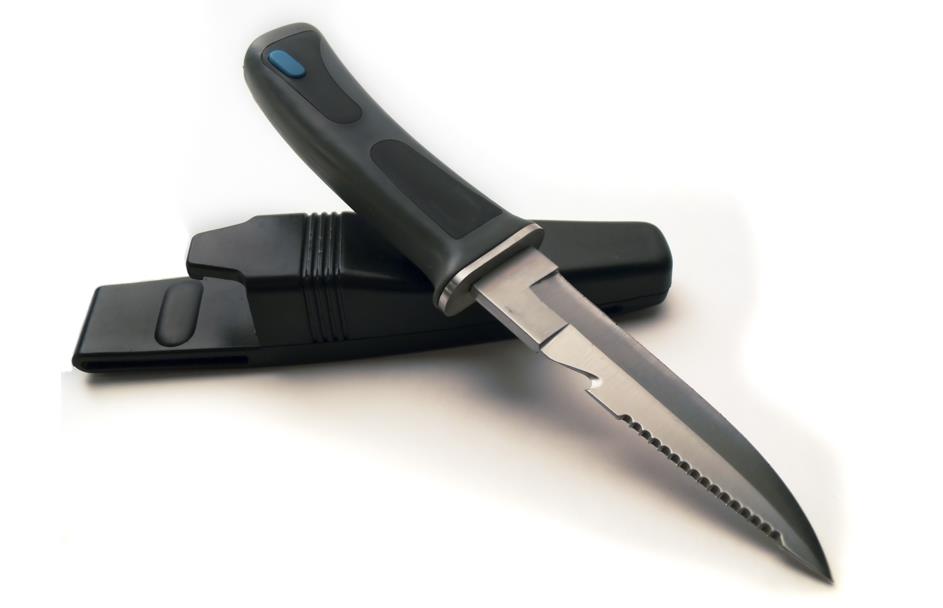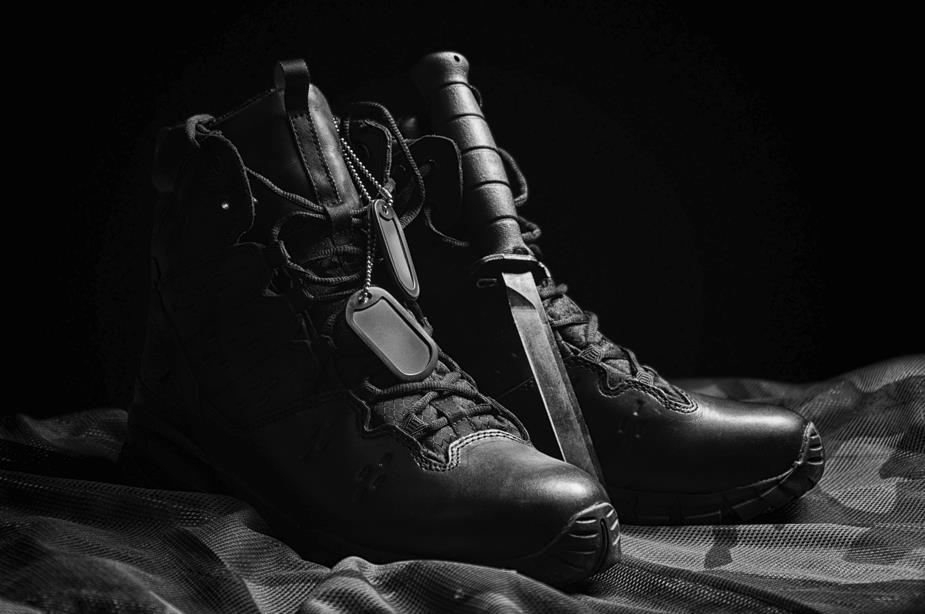A knife sheath is an essential accessory for any knife owner. It serves the practical purpose of protecting the blade’s edge while also ensuring safety during transport and storage. With the variety of knives available, ranging from kitchen cutlery to outdoor survival tools, the types of knife sheaths you might encounter are just as diverse, tailored to the specific needs and environments where the knives will be used.
Materials play a crucial role in the function and longevity of knife sheaths. Options like Kydex, a heat-formable thermoplastic, are favored for their durability and ease of maintenance. Others may prefer the classic appeal and natural durability of leather, which has been used for centuries.
Your choice of knife sheath affects not just the protection of the knife but also your ease of access and the overall experience during use. From nylon and plastic variations to more specialized and aesthetically pleasing wooden sheaths, each type of sheath has distinct advantages and considerations that merit attention. Whether for everyday carry or specific tasks, understanding the different types of knife sheaths will help you choose the right protection for your blade.
Table of contents
Knife sheaths of different materials
Not all knife sheath materials have the same attributes. They all have advantages and disadvantages to them. These ups and downs will have an impact on understanding the proper sheath for both you and your knives. The common knife sheaths materials include but are not limited to the following.
- Leather
- Kydex
- Nylon
- Plastic
- Wood
Here is a breakdown of these common knife sheath materials, things to know, and their pros and cons.
Leather

Leather sheaths for kitchen knives and everyday carry are among the most popular options. Humans have been utilizing these types of sheaths for centuries. With enough care and proper use, a leather knife sheath can last you for many years to come.
Individual leather sheaths can provide great value for people fond of outdoors and outdoor cooking. Leather’s natural and aesthetic appearance, combined with the proper application, makes them an excellent material for knife sheaths. However, this is not to say that they don’t have any downsides.
Leather knife sheath pros
- Leather knife sheaths offer a wide variety of color options. You can find them in many shades, and each one will look just as aesthetic as the other.
- They have great flexibility to them and are generally comfortable to wear. Leather doesn’t cause much irritation to the skin, even when you wear them for prolonged periods. Just like your skin, they are gentle on the edges of your knives, especially compared to other sheath materials.
- Even if you wear a leather knife sheath for long, they won’t require much maintenance – at least not as much as people think or the blades that go into them. Keeping it clean, air drying when it’s wet, and applying conditioner every six months or so, depending on use, is all there is to keep a leather knife sheath at its best.
Leather knife sheath cons
- Although leather knife sheaths are very durable, they show a fair amount of scratch marks. Nevertheless, these marks will add character to the sheath.
- A true, natural leather will cost more than the other materials used for knife sheath making. Still, there are cheaper synthetic options, but these won’t be as durable and are susceptible to wear and tear faster.
- Neglecting care and rapid drying after a rainy day can lead to the leather cracking, warping, or the leather losing its color.
Overall, it wouldn’t be wrong to say leather is the best material to make knife sheaths out of – and that’s for pretty much all kinds of knives. You can find a suitable leather sheath for kitchen knives of all sizes, outdoor cooking knives, and pocket knives.
It’s not just the security that makes leather sheaths great. They are also easier on knife’s edges than other sheath materials. Your knife won’t dull fast when using a leather sheath, especially harder ones like the following.
Handpicked for you
True cutting power in the palm of your hand
Kydex

Kydex is another popular choice for making knife sheaths. It’s a synthetic material similar to plastic but much tougher and durable. Its toughness is broadly favored by the military and law enforcement. Kydex makes great knife sheaths as well as firearm holsters and has applications in the aircraft industry.
Kydex knife sheath pros
- Kydex is highly durable in pretty much all weather conditions, environments, and temperatures.
- It’s entirely waterproof, making it easy to clean and wash the dirt off. You can carry your carbon steel knives with mineral oil applied to the blade without worrying about damaging the sheath.
- Kydex is very accessible for most people. Plus, you can get custom orders to match your knives perfectly.
Kydex knife sheath cons
- Despite its durability, it can hurt your blades’ edges, requiring you to resharpen and hone more often. This downside isn’t specific to Kydex sheaths, though. Any knife sheath made from a rigid material will give you the same concern.
- Considering a good knife sheath should provide a snug yet secure fit around your knife’s blade, finding the right fit with Kydex sheaths can be tricky. You might need to order a custom sheath in the end, adding to the cost.
- Speaking of cost, Kydex tends to be a bit more expensive than other materials but usually not more costly than leather. Additionally, the Kydex sheaths have to be made to fit the knife. This, added with the material’s cost, add up to the price of owning a Kydex sheath.
Nylon
Nylon sheaths are easy to obtain and can be utilized when you have nothing better. They are lightweight, somewhat resistant to water, and inexpensive. Although they are not the best material to make knife sheaths, nylon sheaths are commonly offered for free when you purchase a new knife.
Nylon knife sheath pros
- Nylon sheaths are incredibly lightweight. When carrying your knife in one, you’ll only feel the weight of the knife itself.
- They are very durable against moisture, various weather conditions, and cleaning them is easy.
Nylon knife sheath cons
- Nylon sheaths don’t provide the protection you’d look for in a knife sheath. Even if it covers the knife entirely, the blade will still be subject to bending and other damages.
- Over time, the blade can cut through the sheath, and the cycles of wetting and drying can result in the nylon declining.
Plastic

Like every other product, plastic found its place in knife sheaths. They provide some value, but it’s far from being the optimal material for quality knives. Similar to Kydex, plastic sheaths are waterproof and can take some beating. However, plastic is not even close to the durability you’d get with a Kydex or leather sheath. They can still break apart completely and are prone to dull knife edges quickly.
Plastic knife sheath pros
- Affordable and readily available, the cost of plastic sheaths is often under the competition’s price. Even the custom plastic sheaths can run you less than leather and Kydex alternatives.
- Like anything plastic, you can get sheaths in multiple colors and design options.
Plastic knife sheaths cons
- Just like plastic cutting boards, plastic sheaths tend to dull blades quickly. While this won’t be as big of a problem with carbon steel blades since they are much harder and keep an edge for longer, knives made from softer steel might need honing before use.
- As it isn’t as durable, plastic is prone to breaking if it goes under stress, which can lead to accidents combined with a sharp blade.
Wood
Wood and blades go well together, right? After all, the best cutting boards are wooden, and many premium knife handles are made from wood. For a knife sheath, however, we’d be in the wrong with that thinking. Although wood is one of the oldest choices for making knife covers, they aren’t as favored anymore. The repeated in and out can dull the edges quicker. Additionally, wood is notorious for keeping the moisture in, risking rusting the blades.
Wood knife sheath pros
- Wood offers a broad category of options, and head-to-head with leather sheaths, are the classic choices that are aesthetically pleasing.
Wood knife sheath cons
- Like other hard knife sheath materials, wood dulls the edges quicker.
- The moisture building up on the wood’s surface in contact with the knife can lead to oxidation, rusting the blade slowly but surely.
Knife sheath for different carry methods

When making up your mind about what sheath to get, you also need to consider the carry method. However, kitchen knives are one thing; pocket knives are another. Assuming you won’t carry your kitchen knives outdoors like a tactical knife, this mainly applies to hunting and survival knives.
There are two primary methods to carry a knife: horizontal and vertical. Additionally, vertical carry is split into tip up and tip down. The knife’s overall weight, length, and width are the most important factors when choosing the proper carry method.
For vertical carry, the most comfortable places are the waist and the ankles. The sheath’s flexibility won’t matter as much when carrying it outside the waistband, but when inside, it should have some flexibility to it. Otherwise, it can get uncomfortable to wear too quickly. The neck carry method also works for many people, depending on the knife’s size and weight.
For horizontal carry, the waist appears to be the right place to keep the knife. If the knife is in an accessible position, the type of sheath used doesn’t matter as much. Still, due to what the outdoors might bring, we recommend a durable option.
Here’s a list of some common carrying methods you may want to learn more about:
- Belt loop: The most traditional option, a belt loop sheath, is affixed to your belt for easy access. It’s ideal if you frequently use your knife and need to draw it quickly.
- Clip: A sheath with a clip can be attached to your belt or the edge of your pocket. This method is useful for smaller knives that you might carry every day.
- Neck carry: A sheath that hangs from a cord around your neck allows for discreet carry. Ensure the cord has a breakaway feature for safety.
- Ankle wrap: An ankle sheath is an excellent option for backup knives, particularly in tactical situations. Make sure it’s snug yet comfortable.
- Shoulder harness: For larger knives or when needing to distribute weight more evenly, a sheath with a shoulder harness system can be effective. It’s also beneficial if your waist area is already occupied with other gear.
- MOLLE: Military personnel or outdoor adventurers might favor a sheath that attaches to a MOLLE (Modular Lightweight Load-carrying Equipment) system for integrating with other gear.
Choose a carrying method that best suits your daily activities and environments. Always prioritize safety and legal considerations according to your local laws.
Types of knife sheath by use
When selecting a knife sheath, the intended use plays a crucial role in determining the appropriate type. Different activities require specific features for safety, convenience, and durability. Here are common sheath types categorized by their use:
- Outdoor and survival: For outdoor activities such as camping or for survival situations, you need durable sheaths like Kydex or leather, which offer resistance to the elements and provide secure retention of the knife. They may also come equipped with additional loops or strappings for versatile carry options.
- Tactical: Used predominantly by military and law enforcement, tactical sheaths often feature synthetic materials like Kydex for their robustness and quick draw capabilities. These sheaths are designed to attach to gear like a tactical vest or belt, providing easy access.
- EDC: Sheaths for EDC generally focus on portability and accessibility. Materials may vary, but they are often lightweight and come with clips or slips for pocket or belt attachment.
- Hunting: Hunters prefer sheaths that protect both the knife and carrier while traversing rough terrain. Leather is a common choice, offering a balance of durability and classic aesthetics. Hunting sheaths may also include a built-in sharpener or additional pockets for gear.
Finding the best knife sheath for you
Just as the sheath should be proper for your knife, it needs to be the right one for your needs. While you might be tempted to choose the most durable or comfortable option, matching the blade with the right sheathis crucial. The sheath should be comfortable to wear and appropriate for environmental conditions. Nonetheless, if it treats your knives poorly, it won’t make the best knife sheath overall.
These bring us to taking a look at what you demand from a sheath, the types of knives you’ll carry, and where you’re heading out. The bottom line is you need to weigh what each kind of sheath offers and the possible drawbacks that they might bring. For example, knives with excellent edge retention can tolerate the hardness of Kydex sheaths, but if you’re concerned about dulling the edges, leather is most likely the best option.
Conclusion
There are many knife sheaths, each having its benefits and drawbacks. Although leather and Kydex sheaths are most favored, you can utilize other types of sheaths in certain situations. The perfect sheath needs to provide a snug fit to your blade but secure enough that it won’t fall.












